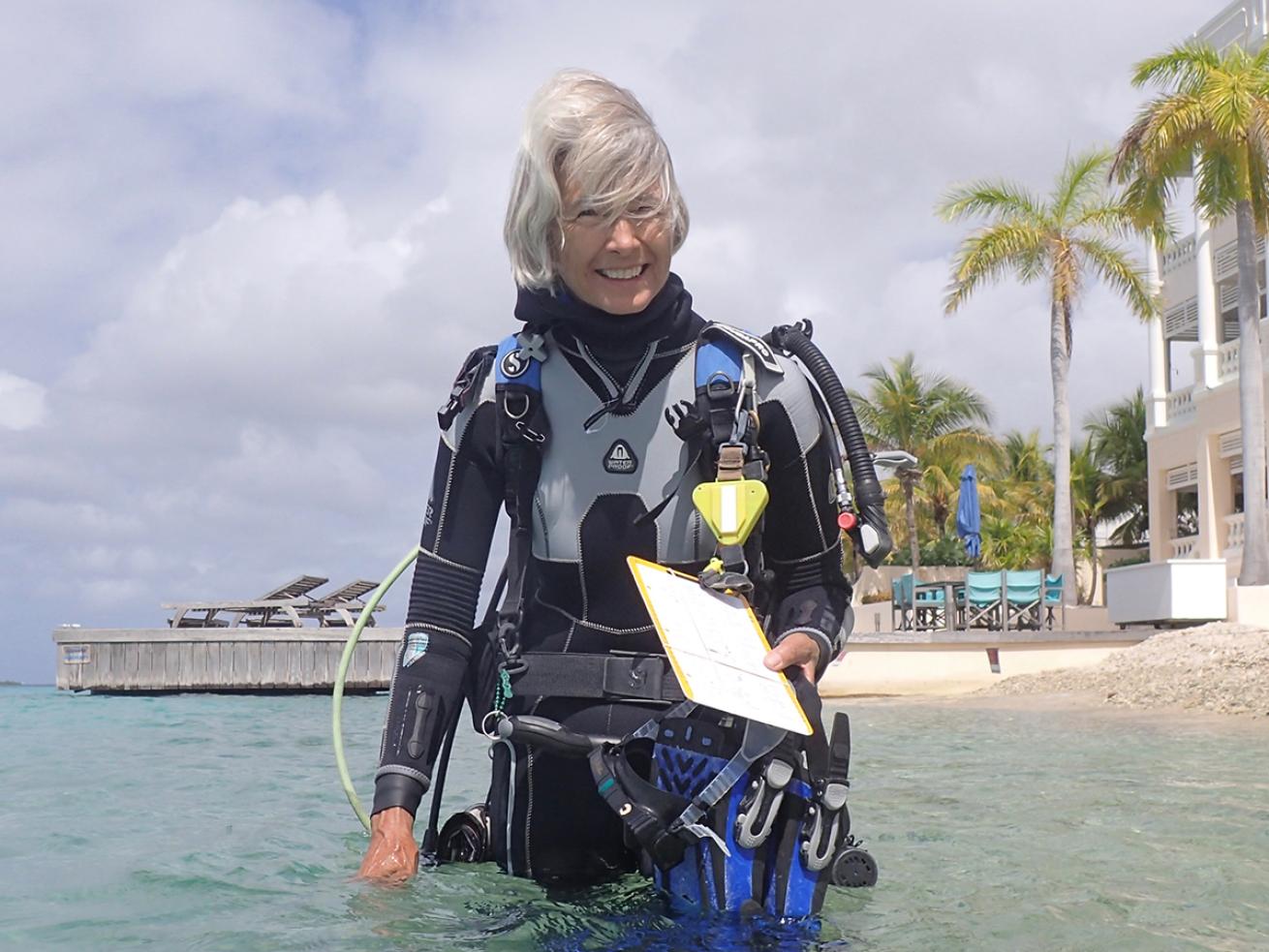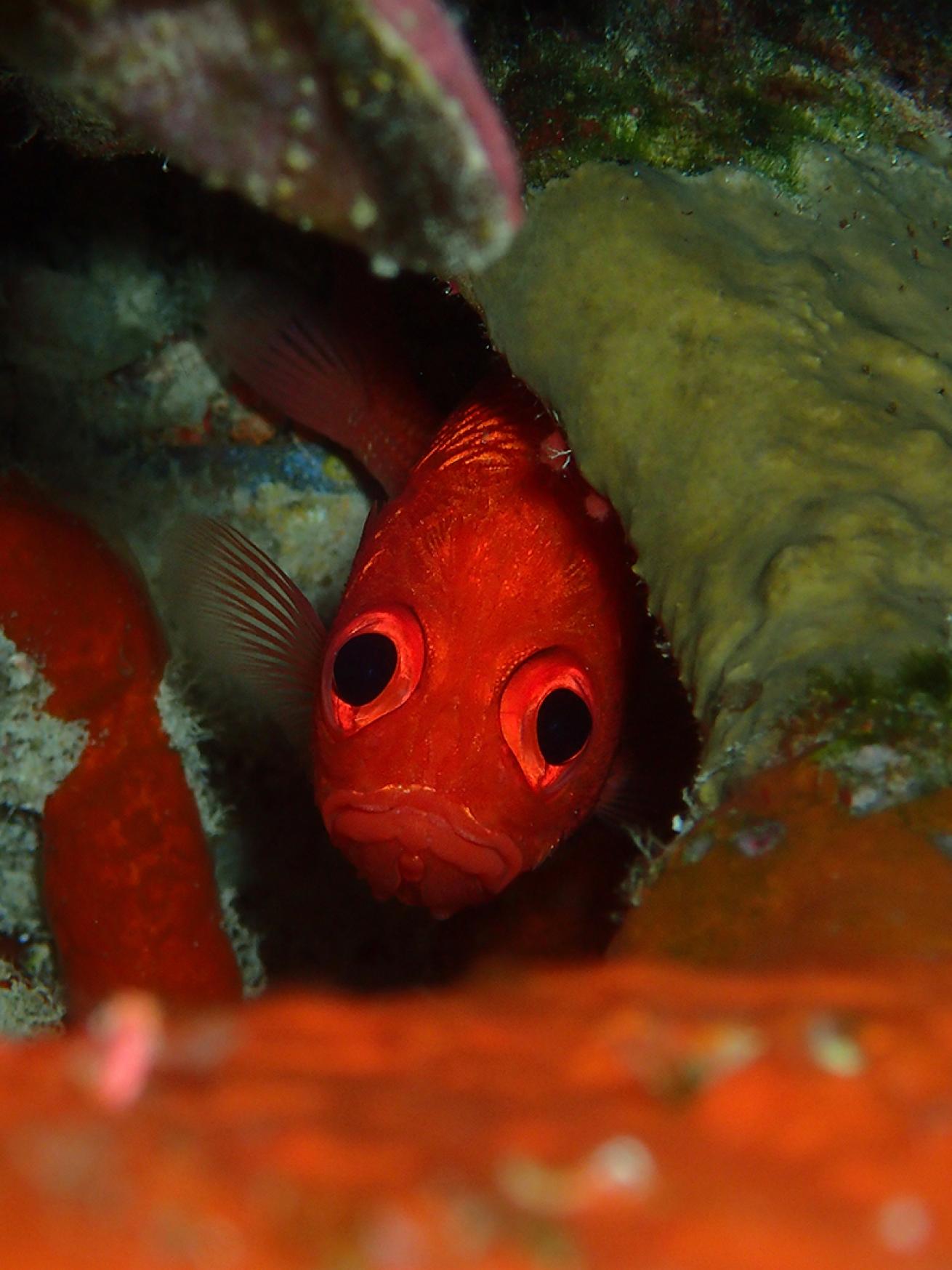379 Survey Dives in 2020—COVID Can’t Stop This Bonaire Citizen Scientist

Courtesy imageCassandra Neal stands in the shallows of Something Special in Bonaire. A retired kindergarten teacher, Neal conducted more surveys for REEF’s Volunteer Fish Survey Project than any other volunteer worldwide in 2020.
Five days a week, Cassandra Neal hops into the Caribbean Sea armed with a tank from Dive Friends and a fish survey slate.
“To me, it’s a treasure hunt,” she says. “I take my flashlight and I usually find all the hidden fish. And I like the smallest — the smaller of the smallest — type to look for. So I have a bifocal mask that I use and I can see the little fish.”
Neal, 70, started surveying Bonaire reefs several times a week in December 2019. She did not let the pandemic slow her down, even stocking up on tanks when it was rumored the dive shop would temporarily close. Throughout 2020, she conducted 379 underwater surveys for the global marine monitoring nonprofit Reef Environmental Education Foundation (REEF) — more than any other volunteer worldwide last year. As of late February 2021, she has logged 370 surveys since Bonaire closed its borders in March 2020, of her lifetime 1,106 surveys.
Any site that’s a “little bit easier to get into for an older person” is fair game, though Neal estimates she has dipped into at least 75 percent of Bonaire’s more than 170 named sites over the years. From Bari Reef to Parke Tului Domacasse to Pink Beach, she and her fellow muck-loving dive buddy load their truck with gear, “lemondrops and something to drink,” prepared to meticulously comb the water for every last fish. Spying two red faced eels? That’s spotting a “few,” according to their REEF slates. A school of more than 100 mahogany snappers? Those are marked as “abundant.”
Finning among Bonaire’s pygmy gobies and queen triggerfish keeps this counter’s hand ticking. On her latest dive, she documented 101 species. And even now a new spot thrills her.
“I was all excited yesterday… [to see a] fish I had never seen that had heard about," she says. "I know a lot of fish but have never seen them. And it's like, ‘Oh look at that, I think that is!’ And then you go back and you look in the book and then you ask people questions on the internet to find out if that truly is what you saw or you're imagining it.”
Neal logs every animal — common or novel — in REEF’s international database, where it is combined with data from over a quarter of a million surveys conducted by over 16,000 volunteers on nearly 15,000 sites worldwide since 1993.
“These citizen scientists are collecting much-needed information about marine life, and are making a valuable contribution to the scientific community,” says Amy Lee, REEF’s engagement and communications manager. “Their efforts have an amazing impact: more than 100 scientific publications have included REEF data, and the use of REEF survey data has led to conservation work including protections for endangered species or the discovery of new species.”
Neal credits REEF for getting her into diving in the first place, and for prompting her to transplant from Long Island to Bonaire.

Cassandra NealA soldier cardinal fish peeks out of the reef during one of Neal's survey dives.
Her husband Franklin, also a diver, started conducting fish surveys in 2000. The two began attending REEF Field Survey trips, and she got dive certified in 2006. On one expedition, “everybody would be coming up from these dives, talking about the fish. ‘Did you see this? Did you see that?’” she says. “They were very high energy even though they had just done a dive…. With all of the energy on the boat...I caught the treasure hunt bug.”
On a REEF trip to Little Cayman about eight years before the kindergarten teacher retired — one of 13 she has attended — Neal wrapped up snorkeling as Franklin returned from a dive. That’s when she let him know: “When I retire, I am going to live on an island for a year. And you are welcome to join me.” One year morphed into a near full-time retirement plan. Her husband has passed since the move, but she found frequent dive buddies in her condo neighbors.
Even after hundreds of surveys, Neal still loves returning to the same sites over and over. It provides the opportunity to visit the “resident stingray,” or find her favorite eel living on Bari Reef.
“Every dive is a treasure hunt and every dive is golden, but...not everybody’s in the same area. So when you come back to a place that you know where a certain fish is...it's fun to find your friends, so to speak.”
Volunteer for REEF
Divers and snorkelers can contribute to REEF’s Volunteer Fish Survey Project from anywhere in the world the program operates, from the South Pacific to the Indian Ocean. First, become a REEF member at no cost, then bring a slate to your next dive with the waterproof survey paper for your region to record the fish (and sometimes invertebrates and algae) you encounter. If you’d like additional preparation before jumping in the water, REEF offers teaching curriculums. After your dive, enter positively identified species and your dive information in REEF’s online database, where the sightings will be vetted and added to the international database.










